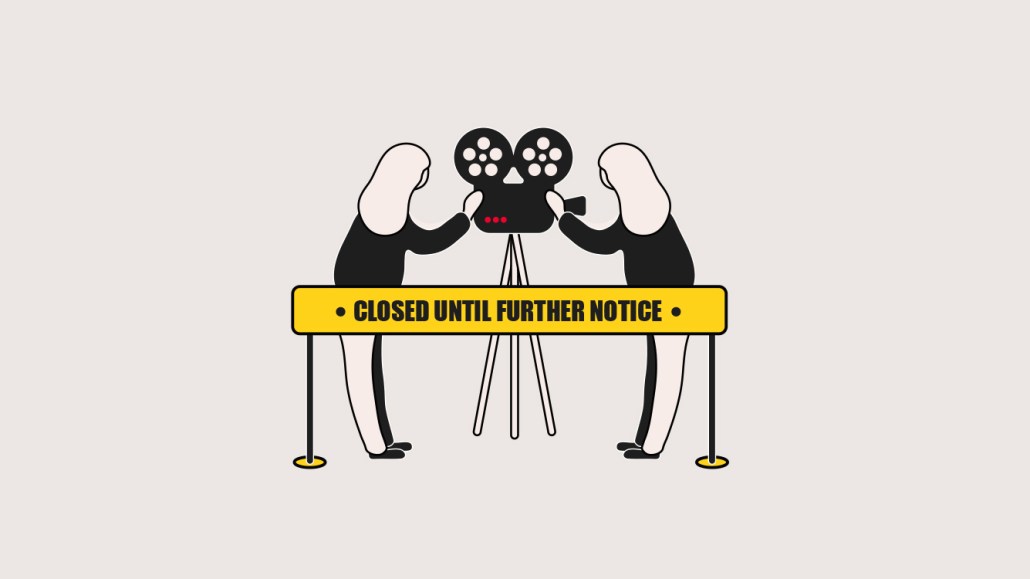Shooting while the baby is napping: TV and video producers adapt to making shows remotely

This article is part of the Digiday Future of TV Briefing, which features must-reads, confessionals and key market stats. To receive the Digiday Future of TV Briefing, please subscribe.
The show must go on. That Hollywood cliché has become a mantra for TV and digital video producers who are figuring out how to continue to produce shows when their staffs are quarantined at home.
“We’re definitely in brave new world territory,” said Alison Camillo, executive producer for TBS’s “Full Frontal with Samantha Bee,” which will return from hiatus on March 25 with a fully remote production.
Many producers had prepared for their physical productions shutting down as the coronavirus outbreak spread. Complex Networks and Whistle stocked up on episodes ahead of time. They and the “Full Frontal” crew sent their employees home with production and editing equipment and equipped their talent with at-home filming kits. Complex Networks even tested the strength of employees’ home internet networks and upgraded the slow connections, said Justin Killion, gm and evp of operations and content services at Complex Networks. Condé Nast Entertainment and Food52 have devised ways for their food show hosts’ home kitchens to fill in for their studio kitchens. “Full Frontal” remotely produced a daily digital series with Bee’s husband filming her outside her home’s woodshed.
Still, there’s only so much preparation possible for such a drastic switch in how programs are produced. Hiccups will happen. To manage them means working to maintain the lines of communication that can be easier to come by on a physical set. It has also put greater importance on shows’ pre- and post-production processes to ensure shoots go smoothly and to iron out any rough edges.
The various teams working on “Full Frontal,” such as the writing, production and post-production teams, are convening in small groups through Zoom and Slack. Bee and the show’s executive producers have a morning Zoom call. There’s also a daily production call to assess the technical aspects of a remote production. And there are calls with TBS to keep network executives in the loop. “Yesterday my ears were really sore at the end of the day because I had AirPods in for like 14 hours,” said Camillo, who, along with other show leaders, relays information across those conversations.
Ahead of shoots for its interview-style shows, Complex Networks is working to more clearly outline conversational flows to avoid people talking over one another, a trap familiar to anyone who’s been on a conference call in the past week. Meanwhile, Whistle is providing its talent with guides for how to shoot themselves using their phones or available cameras, said Joe Caporoso, svp of content and brand platforms at Whistle.
For Food52, pre-production was crucial for filming its show “Genius Recipes” in host Kristen Miglore’s home kitchen. Not only did the production team need to conduct a virtual tour of the kitchen to map out how to maintain the show’s multi-camera setup using a tripod and a camera operated by Miglore’s husband, but it also needed to figure out how to film around her year-old baby. “It was our goal to shoot in an hour while the baby was sleeping,” said Gabriella Mangino, executive producer at Food52.
Fortunately, with some production members unable to do some work remotely, such as those charged with scouting shoot locations, producers are finding they have extra help available. “In the past, if we had a crew of three people working on a certain episode, it might be four now because we might need that fourth person to think about the logistics of the shoot in this new world,” said CNE president Oren Katzeff.
On the post-production side, the aim is to approximate the production quality of a traditional shoot and make up for the fact that filming may have been done on iPhone. That entails color corrections and audio optimizations, Caporoso said.
Since Complex Networks has fewer cameras filming its remote productions compared to a studio show, it is relying on its graphics team and art department to design new overlays and visual assets to provide the transitions that help to hold viewers’ attentions and “feel a lot more premium,” Killion said.
The show goes on.
More in Future of TV

Future of TV Briefing: How the future of TV shaped up in 2025
This week’s Future of TV Briefing looks back at the top topics and trends that overtook the TV, streaming and digital video industries in 2025.

Programmatic agency execs speak out on CTV transparency
At the recent Digiday Programmatic Marketing Summit, agency executives spoke out — on stage and in behind-closed-door town hall sessions — on how they see transparency in CTV.

Future of TV Briefing: How agencies are setting up their programmatic teams for the agentic AI era
This week’s Future of TV Briefing recaps two sessions from last week’s Digiday Programmatic Marketing Summit about how agencies’ programmatic buying teams are evolving.





